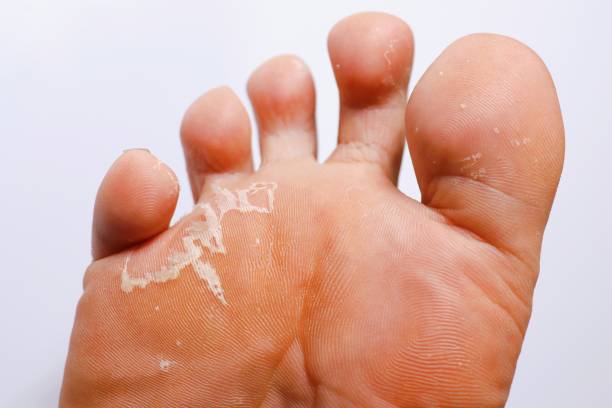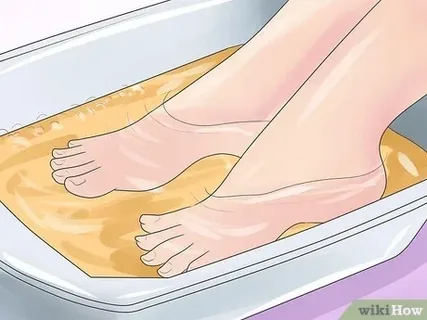How to Get Rid of Athlete’s Foot: Fast Treatment Guide
Are you tired of the constant itching and burning between your toes? That uncomfortable sensation might be athlete’s foot, a common fungal infection that affects millions of people worldwide. The good news? With the right approach, you can effectively treat and prevent this persistent condition.
Quick Takeaways
– Treat athlete’s foot early with antifungal medication to prevent spread and reinfection
– Keep feet dry and clean, especially between toes, to create an inhospitable environment for fungus
– Wear breathable shoes and moisture-wicking socks to reduce fungal growth risk
– Avoid walking barefoot in public areas to prevent initial infection and reinfection
Why Athlete’s Foot Matters
Athlete’s foot isn’t just an inconvenience – it’s a persistent fungal infection that can spread to other parts of your body and even to other people. Research indicates that over 70% of people will experience athlete’s foot at some point in their lives. More concerning, health experts note that untreated infections can lead to bacterial complications and chronic foot problems.
Essential Benefits of Treatment
Taking action against athlete’s foot delivers several key benefits:
– Immediate Relief: Proper treatment can reduce itching and burning within days
– Prevention of Spread: Early intervention stops the infection from affecting toenails or other body parts
– Long-term Protection: Learning proper foot care helps prevent future infections
Medical research suggests that consistent treatment not only cures current infections but reduces recurrence rates by up to 50%.
Getting Started Guide
Before beginning treatment, gather these essential items:
– Over-the-counter antifungal medication (cream, powder, or spray)
– Clean cotton socks
– Breathable shoes
– Separate towel for foot drying
– Antifungal powder for shoes
Step-by-Step Instructions
Step 1: Initial Treatment
1. Wash feet thoroughly with soap and water
2. Dry completely, especially between toes
3. Apply antifungal medication as directed
Step 2: Daily Maintenance
1. Change socks when feet become sweaty
2. Rotate shoes daily to allow proper drying
3. Use antifungal powder in shoes
Step 3: Prevention
1. Wear water-resistant sandals in public showers
2. Keep feet dry throughout the day
3. Choose breathable footwear
Common Mistakes to Avoid
– Stopping Treatment Too Soon: Continue treatment for 1-2 weeks after symptoms disappear
– Sharing Footwear: Avoid sharing shoes, socks, or towels
– Ignoring Early Signs: Don’t wait until symptoms become severe to begin treatment
Progress Tracking Tips
Monitor your progress by tracking:
– Reduction in itching and burning
– Decreased scaling and peeling
– Improvement in skin appearance
– Reduction in foot odor
When to Seek Professional Help
Consult a healthcare provider if:
– Symptoms persist after two weeks of treatment
– The infection spreads to your toenails
– You have diabetes or a weakened immune system
– Severe pain or swelling occurs
Frequently Asked Questions
What is the fastest way to cure athlete’s foot?
The quickest resolution comes from combining proper antifungal medication with excellent foot hygiene. Health authorities report that most cases show improvement within days when treated consistently with over-the-counter medications and proper care.
Can athlete’s foot be cured permanently?
Yes, individual infections can be cured completely. However, you can get reinfected if exposed to the fungus again. Studies have shown that maintaining good foot hygiene and preventive measures significantly reduces recurrence rates.
What triggers athlete’s foot?
Common triggers include:
– Prolonged foot moisture
– Warm, humid environments
– Direct contact with infected surfaces
– Tight, non-breathable footwear
– Compromised immune system
Conclusion
Athlete’s foot is highly treatable with the right approach and consistent care. By following this guide’s prevention and treatment strategies, you can effectively manage and eliminate this common condition. Remember, early intervention and proper foot care are your best defenses against recurring infections.
Medical Disclaimer: This article is for informational purposes only and should not replace professional medical advice. If you have concerns about athlete’s foot or other foot conditions, please consult with a qualified healthcare provider.

